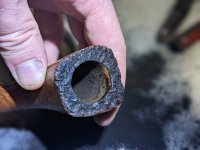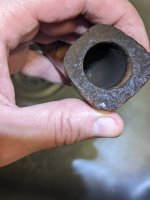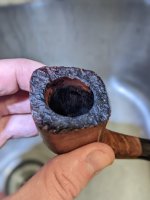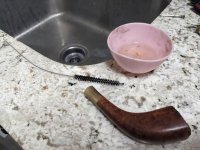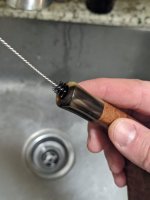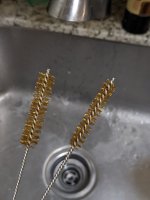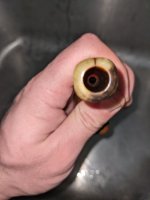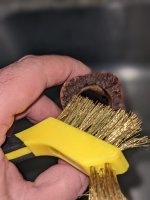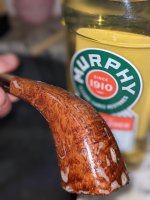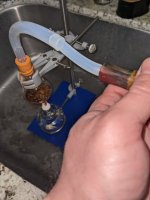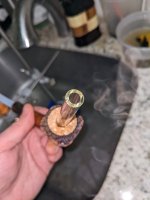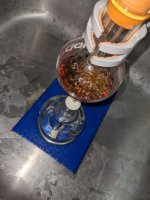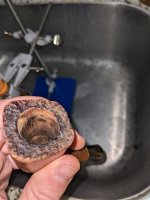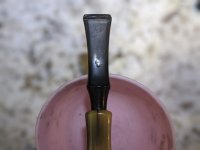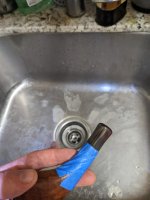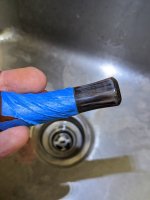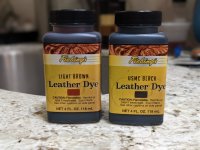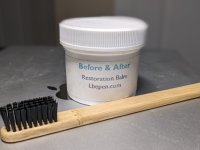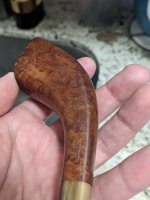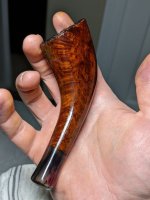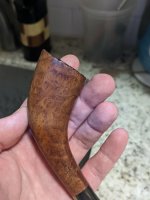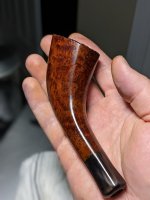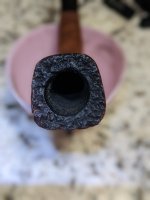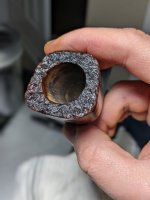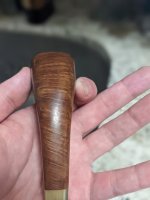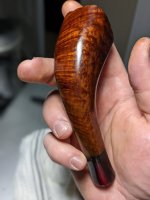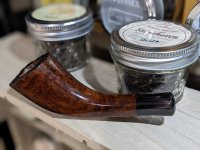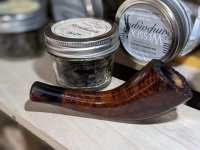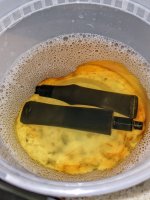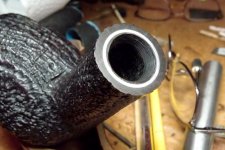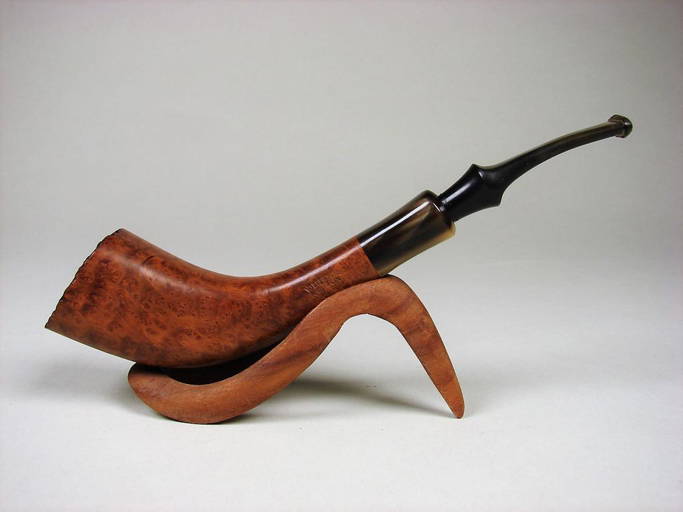Hello all. Hopefully, this post can help other people that are looking to restore and repair pipes. I've gotten pretty decent at doing so, so I'll be using this thread to document the progress of restoring this pipe I just got at an auction.
This pipe has a lot of potential. The grain is beautiful, but a bit dull. The goal during restoration will be the following:
Thanks!
This pipe has a lot of potential. The grain is beautiful, but a bit dull. The goal during restoration will be the following:
- Remove all caking from chamber, bring the chamber back to briar
- Remove oxidation from stem
- Fix bite marks on stem
- Polish stem
- Fix crack on horn
- Disinfect + Remove any ghosts
- Create a pre-carbonization layer
- Re-vitalize stummel
- Polish
Thanks!
Attachments
-
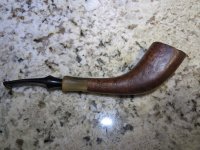 PXL_20220930_010322071.PORTRAIT.jpg163.7 KB · Views: 28
PXL_20220930_010322071.PORTRAIT.jpg163.7 KB · Views: 28 -
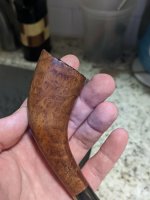 PXL_20220930_010844939.PORTRAIT.jpg85.8 KB · Views: 25
PXL_20220930_010844939.PORTRAIT.jpg85.8 KB · Views: 25 -
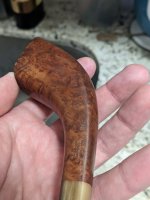 PXL_20220930_010852551.PORTRAIT.jpg104.2 KB · Views: 22
PXL_20220930_010852551.PORTRAIT.jpg104.2 KB · Views: 22 -
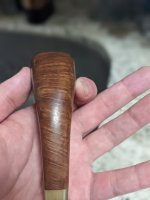 PXL_20220930_010855993.PORTRAIT.jpg74.8 KB · Views: 23
PXL_20220930_010855993.PORTRAIT.jpg74.8 KB · Views: 23 -
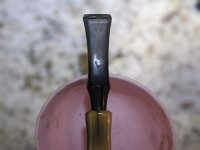 PXL_20220930_010408391.PORTRAIT.jpg55.7 KB · Views: 23
PXL_20220930_010408391.PORTRAIT.jpg55.7 KB · Views: 23 -
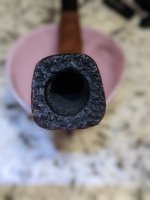 PXL_20220930_010351909.PORTRAIT.jpg66.3 KB · Views: 24
PXL_20220930_010351909.PORTRAIT.jpg66.3 KB · Views: 24 -
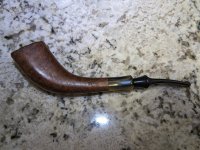 PXL_20220930_010328433.PORTRAIT.jpg165.3 KB · Views: 28
PXL_20220930_010328433.PORTRAIT.jpg165.3 KB · Views: 28





